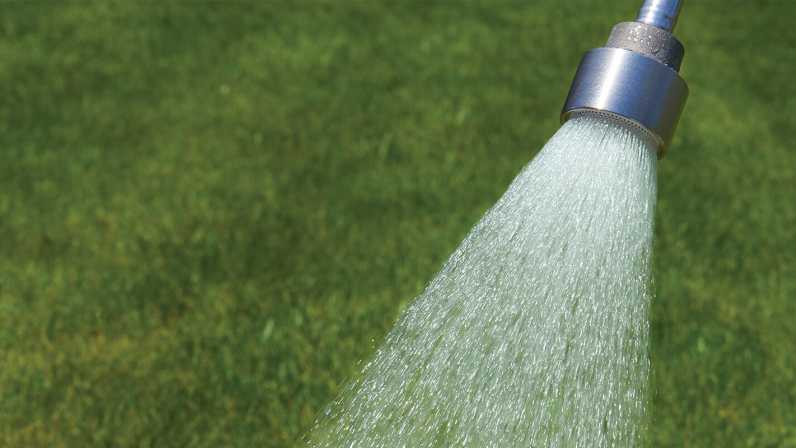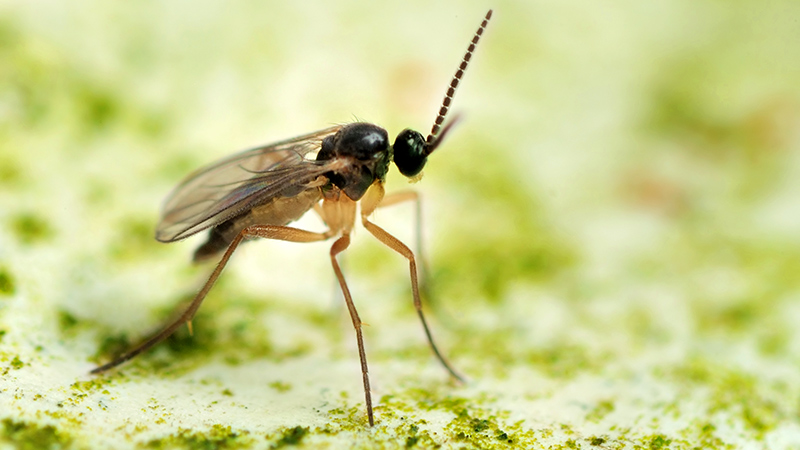Do You Know What’s in Your Greenhouse Irrigation Water?
 Note: This article is the fourth in a series in which Greenhouse Grower and L.L. Klink Greenhouse Solutions (a national sales and service greenhouse provider) are partnering to provide you with information on how to most efficiently manage your greenhouse. Check out the first three articles in the series here.
Note: This article is the fourth in a series in which Greenhouse Grower and L.L. Klink Greenhouse Solutions (a national sales and service greenhouse provider) are partnering to provide you with information on how to most efficiently manage your greenhouse. Check out the first three articles in the series here.
Water is one of the most important aspects of growing plants in the greenhouse, and the quality of that irrigation water is often taken for granted or overlooked. Water plays a critical role in nutrient uptake and overall plant health. Water quality can change depending on the source of the water or the time of year. Knowing the quality of your water can help improve crop health, decrease production costs, and avoid costly maintenance of your irrigation system.
Frequent testing can allow you to understand how the water can change at your location and help with determining the best management practices to obtain the water quality for your operation’s specific needs. Remember that the source of water that is being used can offer various pros and cons to the options needed to make the water an acceptable quality for crop use.
With the various techniques and technologies available today, a water quality solution can be tailored to fit your need and budget.
Types of Irrigation Water
• Rain Water: Depending on location, this can have a large range in pH and dissolved material in the water.
• Surface Water: Ponds, lakes, rivers, etc., can have various amounts of biotic and abiotic material in the water that can have an impact on plant health.
• Reverse Osmosis: Processes water using a semipermeable membrane that pushes water to remove dissolved and suspended material from the water
• Well Water: Access to ground water that is held in underground aquifers. This can also have a wide range of minerals dissolved in the water.
• Tap Water: Comes from a municipal, often has added chemicals such as chlorine and fluoride.
4 Steps for Effective Water Testing
1. Obtain a representative sample.
2. Collect into clean sample bottles, using clean hands.
3. Collect multiple samples (at least three) to help ensure reliability and uniformity.
4. Collect samples at various times of the year to account for peak water demands and low water demand.
What to Look for in Water Test Results
• Acidity/Alkalinity (pH): The pH of the water determines the amount of hydrogen ions in the water. If the water is too acidic (low pH), there is a greater chance that there is excess iron and manganese in the water, which could cause calcium and magnesium deficiencies. If the water is too alkaline (high pH), iron and manganese and other micronutrients can appear deficient.
• Electrical Conductivity (EC): Also known as salinity, this is the measure of salts dissolved in the water. This value allows the grower to determine the amount of time it takes for the salt to build up in the growing media and the amount of water needed to leech out the salts. Too much salt in the growing material can lead to salt toxicity, which causes the reduction of the ability of the plant’s roots to uptake water and nutrients.
• Hardness of water: This is the measure of the amount of carbonates and bicarbonates in water. There are two common elements that are tied to these carbonates: calcium and magnesium. This measurement helps to determine how much acid is needed to help adjust the water pH. Higher amounts of carbonates may require supplements of calcium or magnesium into the water.
Additional Considerations
• Consider engaging a greenhouse design/consulting firm to assist in identifying your short- and long-term needs/direction regarding irrigation and fertilizer.
• Work with a quality testing facility that can give details on water testing protocols, and follow the EPA and USGS (United States Geological Survey) standards.
• Consider your options to correct the problems in the water depending on the crop that is being produced. Some crops can handle poorer quality water better than others.
• Whether the facility is small or large, water quality should be given as much consideration as nutrients and light needs of the specific crop.
• Typical costs for a water test range from $25 to $40 depending on your local lab. Think of it as a small investment to prevent issues in the crop.










